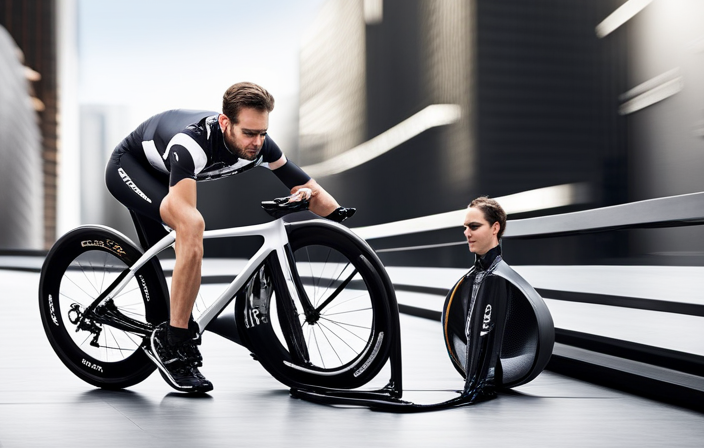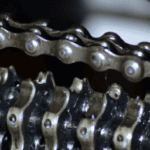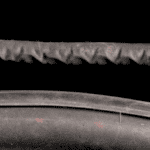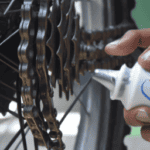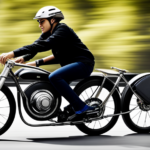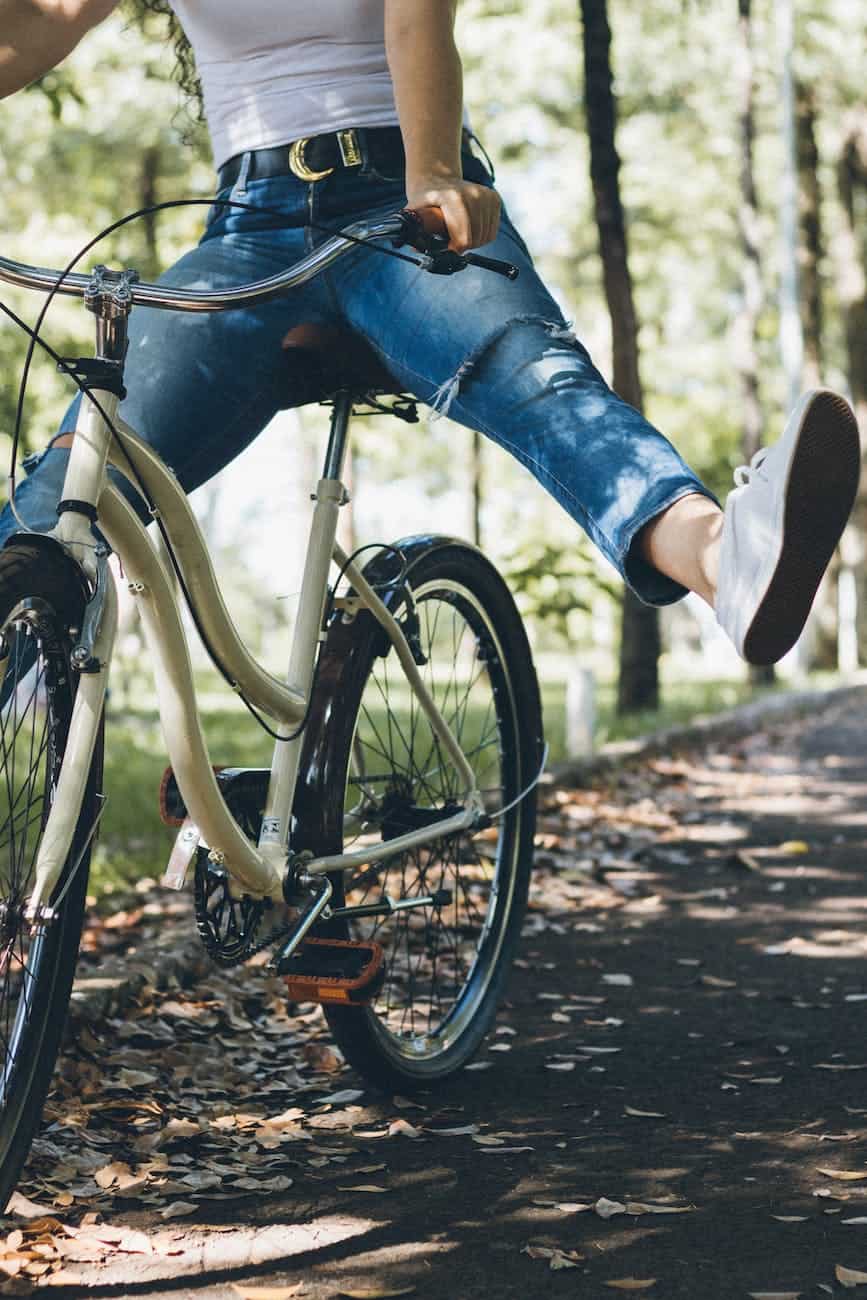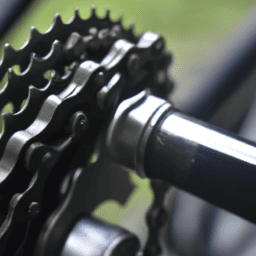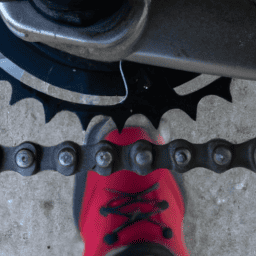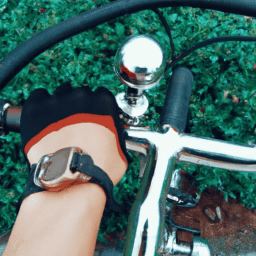Do you feel like your bike has been moving slower than usual? You’re not alone!
In this article, we will explore the various factors that could be causing your bicycle to be sluggish and provide you with practical solutions to speed things up.
From checking tire pressure to upgrading bike components, we will dive into the technical details that can make a significant difference in your riding experience.
So, let’s get ready to pedal faster and leave that slow motion behind.
Key Takeaways
- Lubricants reduce friction, prevent wear and tear, and ensure smooth shifting and braking.
- High-quality lubricants prolong the bike’s lifespan and enhance the overall riding experience.
- Regular maintenance, including proper bike fitting and the use of high-quality lubricants, is crucial for optimal performance.
- Seeking professional help improves bike performance and provides valuable insights and adjustments.
Check Tire Pressure
You should check the tire pressure to see if that’s why your bicycle is so slow. Proper tire pressure is crucial for optimal performance and efficiency.
When the tire pressure is too low, it creates more rolling resistance, making it harder to pedal and slowing you down. By simply inflating your tires to the recommended pressure, you can improve your pedaling technique and make your bike faster.
Additionally, choosing the right gear is essential. Using a gear that is too high for the terrain or your abilities can make pedaling more difficult and decrease your speed.
Once you have checked the tire pressure and selected the appropriate gear, you can move on to the next step: cleaning and lubricating the chain, which will further enhance your bike’s performance.
Clean and Lubricate the Chain
To improve your bike’s speed, start by cleaning and lubricating the chain. Proper chain tension is crucial for optimal performance. A loose chain can cause power loss and affect the bike’s speed. On the other hand, an overly tight chain can cause excessive wear and noise. To ensure proper tension, consult your bike’s manual or a professional for guidance.
Choosing the right lubricant is equally important. Use a lubricant specifically designed for bicycle chains, as other lubricants may attract dirt and grime, which can slow down your bike. Apply the lubricant evenly on the chain, wiping off any excess. This will reduce friction and help your bike run smoothly.
Next, inspect and adjust gears and brakes. Maintaining properly functioning gears and brakes is essential for speed and safety.
Inspect and Adjust Gears and Brakes
Inspecting and adjusting gears and brakes is crucial for ensuring the speed and safety of your bike.
To improve shifting performance, start by checking the gear alignment. Misaligned gears can cause slow shifting or gear skipping. Use a gear alignment tool to adjust the derailleur and ensure it is properly aligned with the gears.
Next, inspect the cables and housing for any signs of wear or damage. Replace them if necessary to ensure smooth shifting.
Additionally, check the brake pads for wear and adjust the brake tension if needed. Properly functioning brakes are essential for your safety.
Lastly, troubleshoot gear skipping by adjusting the barrel adjuster to fine-tune the shifting. With these adjustments, your bike will perform better and shift smoothly.
Now, let’s move on to the next section about upgrading to faster tires.
Upgrade to Faster Tires
Upgrading to faster tires can greatly improve your bike’s speed and performance. By choosing tires specifically designed for speed and efficiency, you can enhance your riding experience.
Faster tires are typically narrower and have a smoother tread pattern, which reduces rolling resistance and improves aerodynamics. This means you can pedal more efficiently and achieve higher speeds with less effort. Additionally, these tires often have a higher psi rating, allowing for a firmer and more responsive ride. When combined with proper tire inflation, they provide optimal grip and control.
Upgrading to faster tires is a simple yet effective way to increase pedaling efficiency and overall speed on your bicycle. By reducing rolling resistance and improving aerodynamics, you can enhance your riding experience and reach your destination faster.
Now, let’s explore how to reduce weight on the bike to further boost performance.
Reduce Weight on the Bike
Reducing weight on the bike can significantly improve its performance and speed. By minimizing the weight of your bicycle, you can enhance your pedaling efficiency and maximize the power transfer from your legs to the wheels.
One way to achieve this is by optimizing the bike frame. Look for lightweight materials such as carbon fiber or titanium, as they offer excellent strength-to-weight ratios. Additionally, consider removing any unnecessary accessories or components that add unnecessary weight to the bike.
Streamlining your bike can make a noticeable difference in how it handles and accelerates. By reducing weight, you can make your bike more responsive and agile, allowing you to ride faster and with greater ease.
This improved performance will set the foundation for the subsequent section about improving your riding technique.
Improve Your Riding Technique
To improve your riding technique, focus on maintaining a smooth pedal stroke and using proper body positioning.
-
Improve pedal efficiency:
-
Engage your core muscles to stabilize your body and transfer power to the pedals.
-
Pedal in circles rather than just pushing down on the pedals.
-
Practice pedaling at a higher cadence to increase efficiency.
-
Proper body positioning:
-
Keep your upper body relaxed and avoid unnecessary tension.
-
Bend your elbows slightly to absorb vibrations and bumps.
-
Shift your weight forward when climbing to maintain traction and prevent wheel spin.
By improving your pedal efficiency and maintaining proper body positioning, you can maximize power transfer and minimize energy wastage. This will help you ride faster and more efficiently.
Consider your riding position as the next step to further enhance your bicycle’s speed.
Consider Your Riding Position
When considering your riding position, make sure to find a comfortable and aerodynamic posture. To improve aerodynamics and increase speed, it is important to reduce wind resistance. Start by positioning yourself slightly forward on the saddle, keeping your back straight, and bending your elbows to create a more streamlined profile. This will help minimize drag and allow you to cut through the air more efficiently.
Additionally, choosing the right saddle can greatly impact your riding performance. Look for a saddle that fits your body shape and offers enough support without causing discomfort. By finding the optimal riding position and saddle, you can maximize your speed and efficiency on the bike.
Transitioning into the next section, upgrading your bike components can further enhance your riding experience and improve your overall speed.
Upgrade Your Bike Components
To further enhance your riding experience and increase the speed of your bicycle, consider upgrading your bike components. By making strategic modifications to key parts of your bike, you can optimize its speed and performance.
Upgrading components such as the drivetrain, wheels, and tires can significantly improve your bike’s efficiency and reduce rolling resistance. Investing in a lightweight and aerodynamic frame can also make a noticeable difference in your overall speed. Additionally, upgrading to a more advanced gear system, like a higher-quality cassette or derailleur, can allow for smoother gear shifts and a more efficient transfer of power.
By carefully selecting and upgrading these components, you can maximize your bike’s speed and ensure a more enjoyable ride.
Now, let’s explore how maintaining a regular maintenance schedule can further improve your biking experience.
Maintain a Regular Maintenance Schedule
Make sure you regularly maintain your bike to ensure a smooth and enjoyable riding experience.
One important aspect of maintenance is ensuring a proper bike fitting. A bike that is not properly fitted to your body can lead to discomfort, pain, and decreased performance. It is crucial to adjust the saddle height, handlebar position, and pedal alignment to ensure optimal comfort and efficiency while riding.
Additionally, using high-quality lubricants can greatly improve your bike’s performance. These lubricants reduce friction, prevent wear and tear on the components, and ensure smooth shifting and braking. Investing in high-quality lubricants can prolong the lifespan of your bike and enhance your overall riding experience.
Considering the importance of proper bike fitting and the benefits of using high-quality lubricants, it is essential to incorporate regular maintenance into your biking routine.
Transitioning into the subsequent section, it is also worth considering professional help or a bike fit to ensure your bike is performing at its best.
Consider Professional Help or Bike Fit
Consider seeking professional help or scheduling a bike fit to optimize your riding experience. A professional bike fitter can provide valuable insights and adjustments that can greatly improve your bike’s performance. A well-fitted bike can enhance your comfort, efficiency, and overall speed.
When it comes to bike fitting benefits, there are several key advantages. Firstly, a professional fitter can assess your body’s biomechanics and make adjustments to ensure proper alignment and reduce the risk of injuries. Additionally, they can make tweaks to your bike’s components, such as saddle position, handlebar reach, and cleat alignment, to maximize power transfer and efficiency.
To find a professional fitter, consider checking with local bike shops or cycling clubs for recommendations. Look for someone with experience, certifications, and positive reviews. A good fitter will take the time to understand your specific needs and goals, and work with you to achieve the best possible fit. Remember, investing in a proper bike fit can make a significant difference in your riding performance and enjoyment.
| Benefit | Description | Emotion |
|---|---|---|
| Enhanced comfort | A well-fitted bike reduces discomfort, allowing for longer and more enjoyable rides. | Satisfaction |
| Increased efficiency | Optimal bike fit minimizes energy wastage, maximizing power transfer and making you more efficient on the road. | Confidence |
| Improved speed | A professional fitter can make adjustments that improve aerodynamics, helping you achieve higher speeds with less effort. | Excitement |
| Reduced risk of injuries | Proper bike fit ensures correct alignment, reducing strain on joints and muscles, and minimizing the chance of injuries. | Peace of mind |
| Enhanced performance | With a well-fitted bike, you can push your limits and reach your full potential, leading to improved performance and results. | Motivation |
Frequently Asked Questions
How can I make my bike more aerodynamic to increase speed?
To increase bike speed, proper maintenance is crucial. Regularly clean and lubricate the chain, ensure tire pressure is optimal, and check brake alignment. Additionally, improving body positioning by lowering your torso and tucking elbows can greatly enhance bike aerodynamics.
Are there any specific exercises or training techniques that can help me ride faster?
To ride faster, I recommend incorporating interval training into your cycling routine. This high-intensity workout helps improve your cardiovascular fitness and increase your speed. Additionally, make sure to maintain a proper cycling nutrition plan to fuel your body for optimal performance.
Should I invest in a lighter frame to improve speed?
Investing in a lighter frame can greatly improve acceleration and enhance overall speed. The benefits of a lighter frame include reduced weight and increased efficiency, allowing for easier and faster pedaling.
Are there any specific bike accessories or gadgets that can increase my bike’s speed?
There are several bike accessories and gadgets that can help increase your bike’s speed. Some examples include aerodynamic handlebars, lightweight tires, and a high-quality chain. Additionally, maintaining proper bike maintenance and ensuring proper cycling nutrition can also improve speed.
What are some common mistakes or bad habits that could be slowing me down?
Improper gear selection and lack of maintenance are common mistakes that can slow me down. I should ensure I’m using the appropriate gear for the terrain and regularly maintain my bicycle for optimal performance.
Conclusion
Well, there you have it. After diving into the world of bicycle speed, we’ve explored all the possible reasons why your beloved two-wheeler might be feeling a little sluggish.
From checking tire pressure and cleaning the chain to upgrading tires and reducing weight, we’ve covered it all.
And let’s not forget about considering your riding position and upgrading bike components.
But hey, if all else fails, you can always rely on professional help or a bike fit.
So go forth and conquer the roads, my slow-speed friend!

